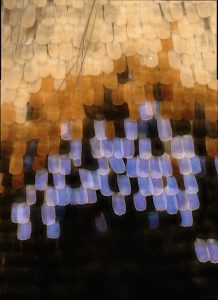Enter your address to receive notifications about new posts to your email.
Articles tagged Insects
(17 results)
-
Behind the cover: CRISPR in color
In the life of a butterfly, color is crucial. Color helps these flashy insects attract mates, avoid being spotted, or even signal to predators that they would make a bad meal. On the cover of the March issue of GENETICS is a close-up view of Junonia coenia, a butterfly with stunning blue eyespots on its…
-
50 years of molecular evolution in Drosophila
In the genomic era, population geneticists are flooded with molecular data on the evolution of natural populations. This deluge started in 1966 as a trickle of data from protein electrophoresis studies, including the landmark GENETICS papers published by Richard Lewontin and John Hubby. As Lewontin is honored this week at the Annual Drosophila Research Conference…
-
Susan A. Gerbi awarded 2017 George W. Beadle Award
We are pleased to announce that Susan A. Gerbi, PhD is the 2017 recipient of the George W. Beadle Award in recognition of her outstanding contributions to the genetics community. In the course of her research on DNA replication and amplification, Gerbi has helped develop techniques for mapping replication origins, genome sequencing, and whole organism…
-
A single gene controls multiple feeding-related traits in fruit fly larvae
Fruit fly larvae have one goal: eat as much as possible. After the tiny worm-like larvae hatch from eggs embedded into the flesh of rotting fruit, they eat their way out. After days of gorging, they find a good spot to pupate and then emerge as adults. Fruit flies cannot grow after this transformation, however,…
-
Nettie Stevens: Sex chromosomes and sexism
At the time of her death in 1912, Nettie Maria Stevens was a biologist of enough repute to be eulogized in the journal Science by future Nobelist Thomas Hunt Morgan and for her passing to be noted in The New York Times. In 1910 she had been listed among 1,000 leading American “men of science.”…
-
Evolving butterflies and genome assemblies
The dizzying array of wing patterns in Heliconius butterflies has served as a model for evolution and adaptation in the wild for more than a century. The genus is most famous for the way different species within a geographic region tend to converge on similar wing markings—known as biological mimicry. In the latest issue of…






